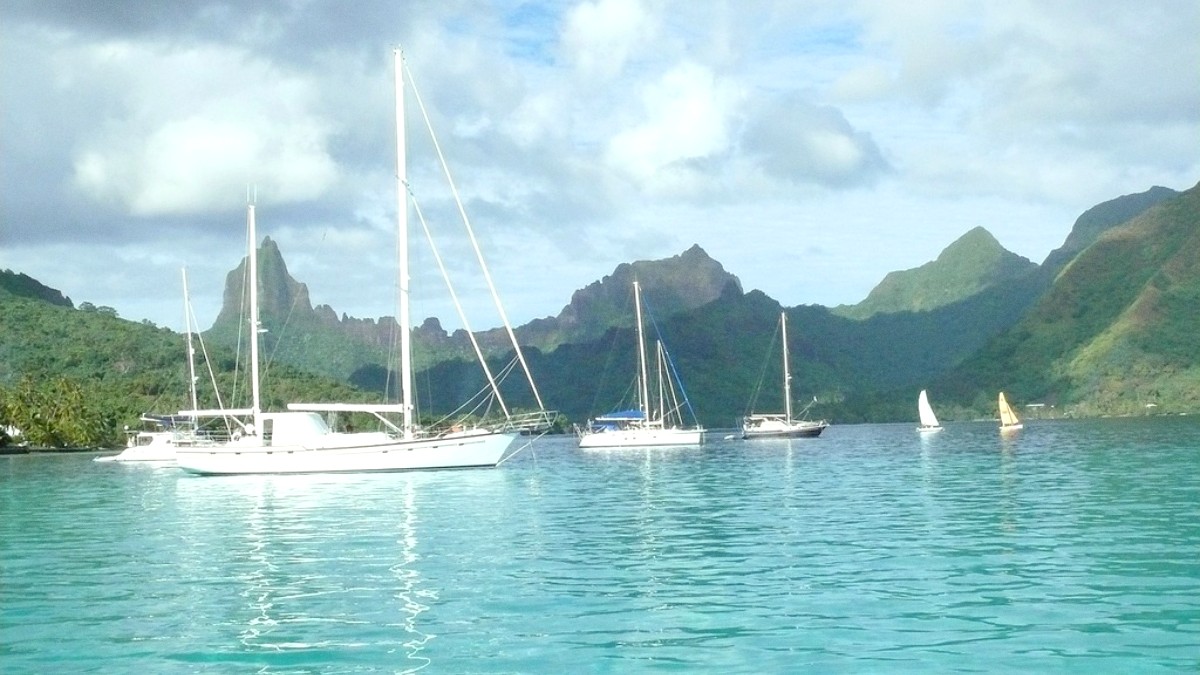
Tahiti And French Polynesia
These peaks, along with others, form a dramatic, verdant interior, deeply cut by valleys and ravines. The island measures approximately 60 square kilometers (23 square miles), with a coastal road circling its perimeter, giving access to its various villages, resorts, and natural attractions. A barrier reef largely surrounds Moorea, forming the expansive, calm lagoon that is a hallmark of the destination. This lagoon, varying in shades of blue and green, is a natural playground for snorkeling, diving, and other water activities.
The expansive, calm lagoon is a hallmark of the destination. Varying in shades of blue and green, it is a natural playground.
Under the surface, colorful coral gardens, reef fish, and opportunities to observe rays and sharks await divers and snorkelers.
Moorea holds a deep and complex history, intertwined with ancient Polynesian traditions, European exploration, and the establishment of French influence. Its story begins thousands of years ago with the migration of Polynesians across the Pacific. These early settlers brought with them rich oral traditions, sophisticated navigation techniques, and a societal structure centered around Marae, sacred open-air stone temples that served as places of worship, meeting, and ceremony. Moorea contains several significant Marae sites, especially within the Opunohu Valley, offering tangible links to this ancient past. These sites were centers for religious rituals, political gatherings, and the performance of traditional dances and chants.
European contact began in the late 18th century. Captain James Cook marked a turning point. His arrival, and those of other explorers, brought European goods, diseases, and new ideas that profoundly impacted Polynesian society. Missionaries, specifically from the London Missionary Society, arrived in the early 19th century, leading to the widespread adoption of Christianity. The Papetoai Temple, built in 1827, is the oldest Protestant church in the South Pacific, a testament to this period of religious conversion.
This period introduced French language, legal systems, and educational structures.
Copra and vanilla became important exports.
It remains a major agricultural identity today, with the Rotui Juice Factory as a modern symbol.
Balancing its Polynesian roots with French administrative and cultural ties.
Population includes Polynesian, French, Chinese, and mixed-race communities.
During World War II, French Polynesia remained under French control, with the islands playing a minor strategic role. Post-war, a gradual move towards autonomy began, culminating in French Polynesia becoming an overseas collectivity of France with a significant degree of self-governance. This political evolution shaped modern Moorea, balancing its Polynesian roots with its French administrative and cultural ties.
Moorea's fertile soil proved ideal for pineapple cultivation. The Rotui Juice Factory is a modern symbol of this heritage.
The blend of influences manifests in the island's cuisine, art, and daily life, creating an unique identity that visitors find captivating. The local language, Tahitian, coexists with French, reflecting this duality.
Plan for a mix of land and water activities. Moorea's true charm unfolds when you explore both its marine and mountainous sides.
Moorea presents itself as a more tranquil alternative to Tahiti, with ample options for adventure and relaxation. Its natural beauty defines the island, from the dramatic peaks of Mount Rotui and Mount Tohivea to the calm, clear waters of its surrounding lagoon.
On land, the island is more than just scenic drives. Pineapple plantations thrive in the fertile valleys, offering a sweet taste of local agriculture. Hiking trails lead to panoramic viewpoints like Belvedere, with breathtaking vistas of the twin bays. These trails also connect to ancient Marae sites, linking visitors with the island's rich Polynesian past. Guided 4x4 tours explore the rugged interior, accessing hidden valleys and learning about local flora and fauna.
Hiking trails lead to panoramic viewpoints. Explore pineapple plantations and ancient Marae sites.
Snorkeling, diving, and observing rays and sharks in their natural habitat in the clear lagoon.
Experience the blend of Polynesian warmth and French sophistication. Sample local cuisine at Roulottes.
The island’s accommodation ranges from cozy Pensions de famille (family guesthouses) that give an intimate, culturally immersive experience, to luxurious overwater bungalows that give unparalleled comfort and direct lagoon access.